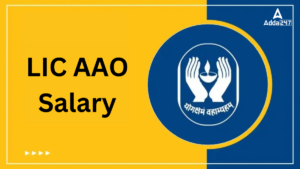Dear Aspirants,
Reasoning Questions for SBI PO Prelims 2018 (Week-05)
Reasoning Ability is an onerous section. With the increasing complexity of questions, it becomes hard for one to give it a cold shoulder. The only way to make the grade in this particular section in the forthcoming SBI PO Prelims and other banking exams is to practice continuously with all your heart and soul. And, to let you practice with the best of latest pattern questions, here is the Adda247 Reasoning Quiz with the exact same pattern of questions that are being asked in the exams.
Following the study plan for SBI PO Preliminary Examination 2018, the third week starts with practice questions on Puzzles & Seating Arrangement and Syllogism. To ensure proper preparation of the section we advise you to go through all the questions sincerely and try to attempt each one of them. Afterward, match your solutions and the approach with the one that would be provided later. Practice more and more questions on the same section to enhance your grip over the topics. Following is the Reasoning Ability quiz to help you practice with the best of latest pattern questions.
Check Detailed VIDEO SOLUTION for this Quiz
Directions (1-5): Study the information carefully and answer the questions given below:
There are five married couples in a family who have only one child. P, Q, R, S, and T are child and they are of different ages (in years) i.e. 12, 15, 21, 18, and 9 (not necessarily in same order).
I is a female member of the family and is not married to B and J. C is married to F, whose child is 18 yrs old. A’s child is 15 yrs old. G is a father of P. R’s and Q’s age is an odd number. B and J are male members. I’s child is not the oldest. P is not child of H. Q is not a child of B. D is a female member. H is not married to J. F is not mother of S. T is a child of E, who is a male member. R is younger than T but older than Q.
Q1. What is the age of the child of B?
(a) 9 years
(b) 18 years
(c) 12 years
(d) 15 years
(e) None of these
Q2. Who among the following is child of H?
(a) P
(b) R
(c) T
(d) S
(e)None of these
Q3. Who among the following is a child of D and what is the age of D’s child?
(a) T, 9yrs
(b) Q, 12yrs
(c) Q, 9yrs
(d) S, 9yrs
(e) None of these
Q4. Which of the following combination is true regarding the given arrangement?
(a) G-I-R-15
(b) B-A-R-15
(c) J-D-Q-18
(d) E-F-T-21
(e) None of these
Q5. Who among the following is wife of E?
(a) H
(b) A
(c) T’s mother
(d) Q’s mother
(e) Both (a) and (c)
Directions (6-10): Read the following character sequence carefully and then answer the question given below it.
Q6. How many such symbols are there in the above sequence, each of which is immediately preceded by a vowel and immediately followed by a symbol?
(a) One
(b) Two
(c) Three
(d) None
(e) None of these
Q7. If all the numbers are dropped in the given series then which element will be at 12th position from left end?
(a) $
(b) T
(c) @
(d) R
(e) E
Q8. Which of the following element is fifth to the left of sixteenth element from the left?
(a) 5
(b) T
(c) %
(d) &
(e) 7
Q9. How many such symbols are there in the above sequence, each of which is immediately preceded by a number and immediately followed by a number?
(a) One
(b) Two
(c) Three
(d) None
(e) None of these
Q10. What will come in place of the question mark of the series?
2 @ !, W $ 3, T 7 &, ?
(a) D * E
(b) D E *
(c) * E D
(d) L X U
(e) None of these
Directions (11-15): In these questions, relationship between different elements is shown in the statements. These statements are followed by two conclusions:
Give answer as:
(a) if only conclusion I follows.
(b) if only conclusion II follows.
(c) if either conclusion I or II follows.
(d) if neither conclusion I nor II follows.
(e) if both conclusions I and II follow.
Q11. Statements:
A ≥ B = C; B < D ≤ E
Conclusions: I. D >A II. E > C
Q12. Statements:
L > U ≥ K; Z < U < R
Conclusions: I. L > Z II. K < R
Q13. Statements:
Y < J = P ≥ R > I
Conclusions: I. J > I II. Y < R
Q14. Statements:
V ≥ K > M = N; M > S; T < K
Conclusions: I. T < N II. V = S
Q15. Statements:
F ≤ X < A; R < X ≤ E
Conclusions: I. F ≤ E II. R < F






 GA Capsule for SBI Clerk Mains 2025, Dow...
GA Capsule for SBI Clerk Mains 2025, Dow...
 The Hindu Review October 2022: Download ...
The Hindu Review October 2022: Download ...
 LIC AAO Salary 2025, Revised Structure, ...
LIC AAO Salary 2025, Revised Structure, ...





